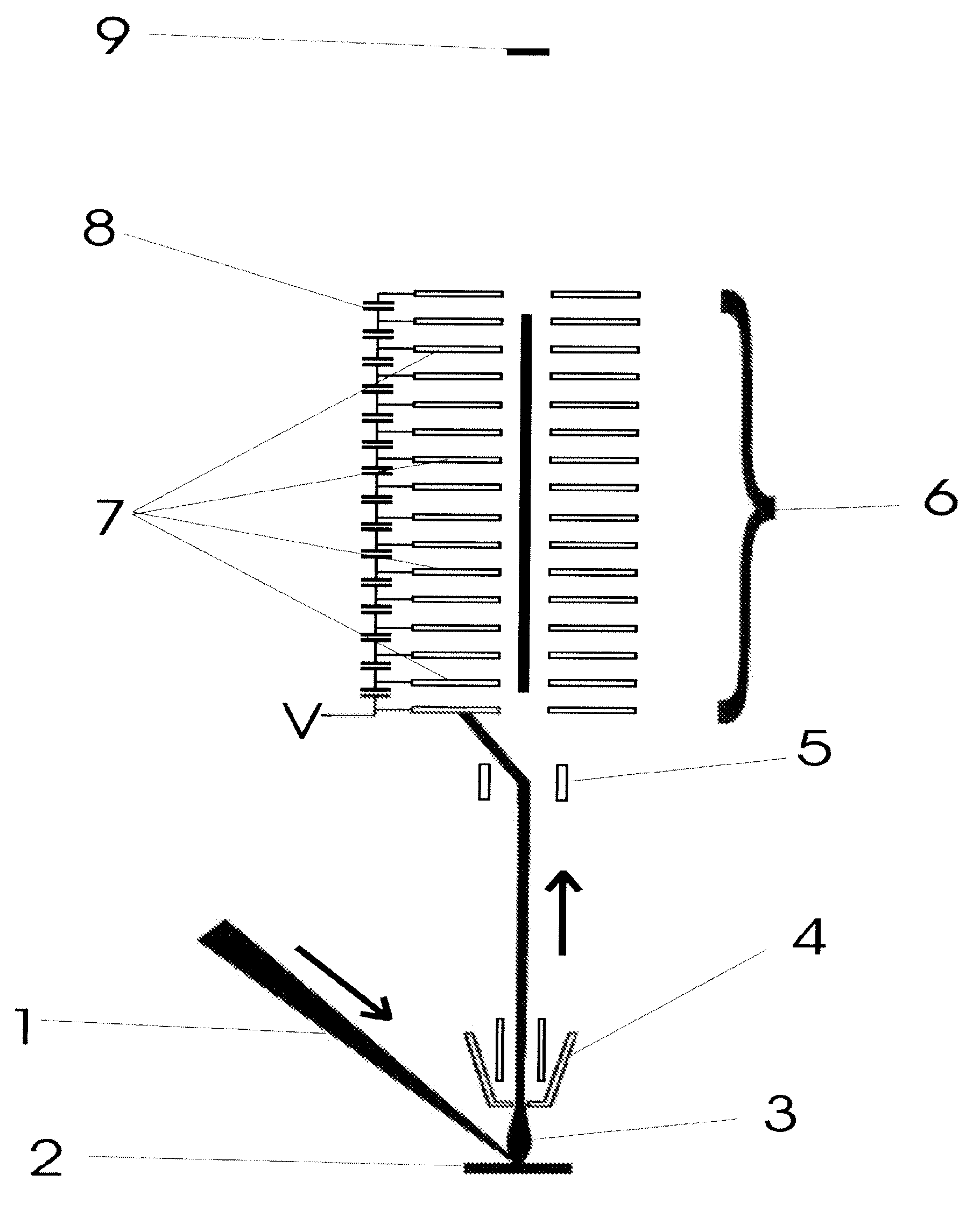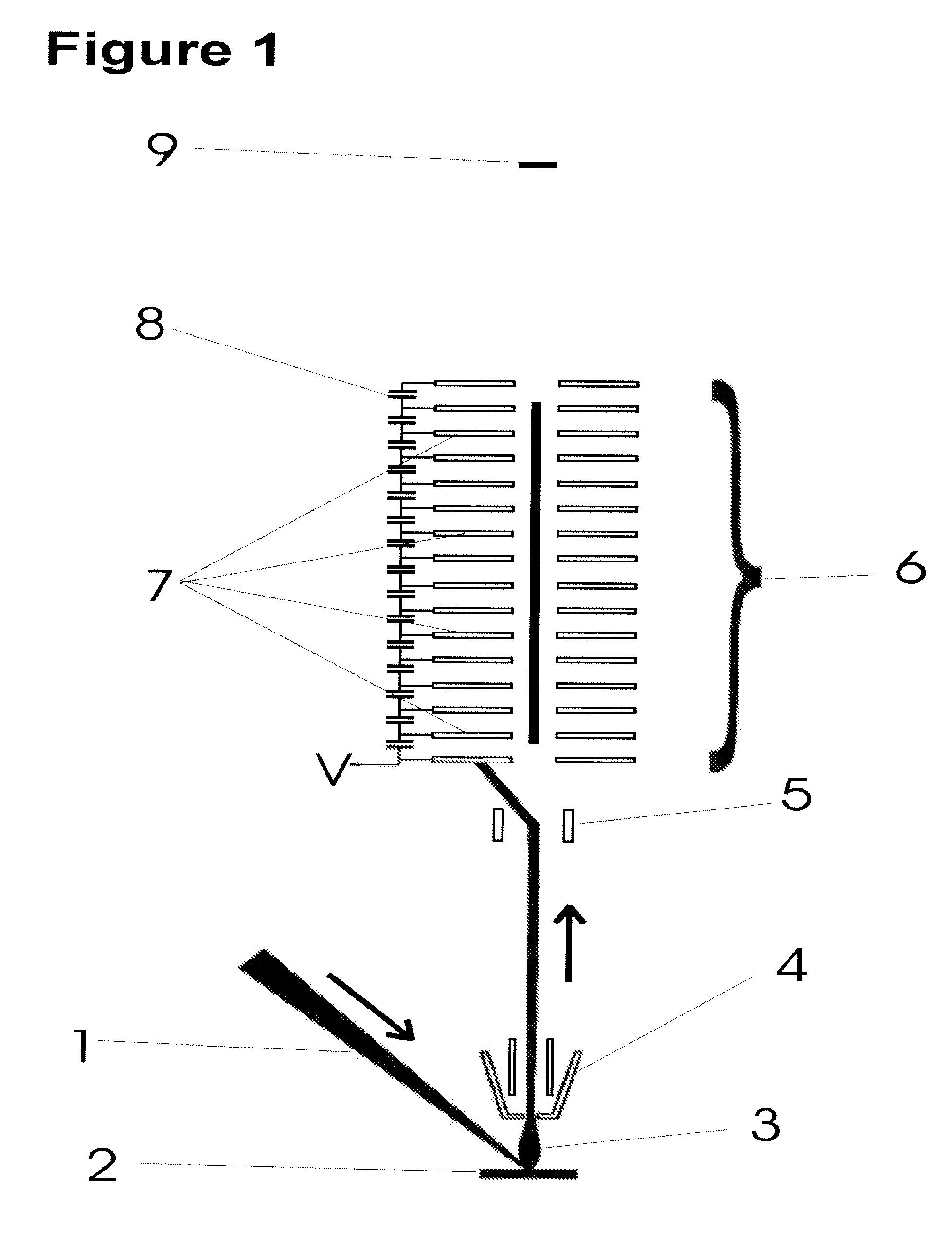Method and apparatus for the analysis of samples
- Summary
- Abstract
- Description
- Claims
- Application Information
AI Technical Summary
Problems solved by technology
Method used
Image
Examples
Embodiment Construction
[0011]A preferred embodiment as shown in FIG. 1 is now described.
[0012]A continuous primary beam (1) is incident on the sample (2), generating a continuous secondary ion beam (3), roughly collimated by the extraction optics (4). This beam is chopped into discrete pulses by a set of deflection plates (5) at the entrance to the multiple plate buncher assembly (6). The timing of the switching of the deflection plates (5) is adjusted such that close to the whole length of the buncher (6) is filled by one pulse in the mass range of interest, as shown in the figure. The buncher assembly consists of a set of electrodes (7) in the form of plates with aligned holes along the beam path. These plates are connected by a chain of capacitors (8) such that a high voltage (V) applied to the rear plate results in a series of reducing voltages applied to plates further forward. At the instant when a secondary beam pulse is contained within the buncher, a high voltage pulse is applied to the buncher p...
PUM
 Login to View More
Login to View More Abstract
Description
Claims
Application Information
 Login to View More
Login to View More - R&D
- Intellectual Property
- Life Sciences
- Materials
- Tech Scout
- Unparalleled Data Quality
- Higher Quality Content
- 60% Fewer Hallucinations
Browse by: Latest US Patents, China's latest patents, Technical Efficacy Thesaurus, Application Domain, Technology Topic, Popular Technical Reports.
© 2025 PatSnap. All rights reserved.Legal|Privacy policy|Modern Slavery Act Transparency Statement|Sitemap|About US| Contact US: help@patsnap.com


